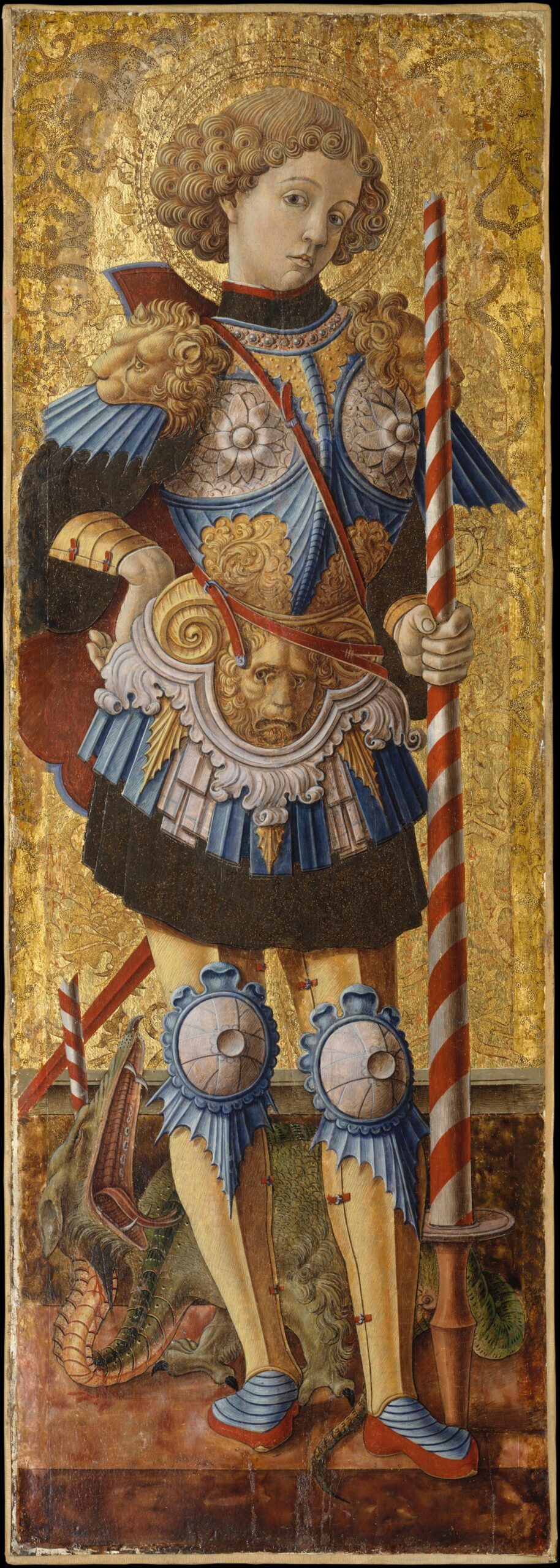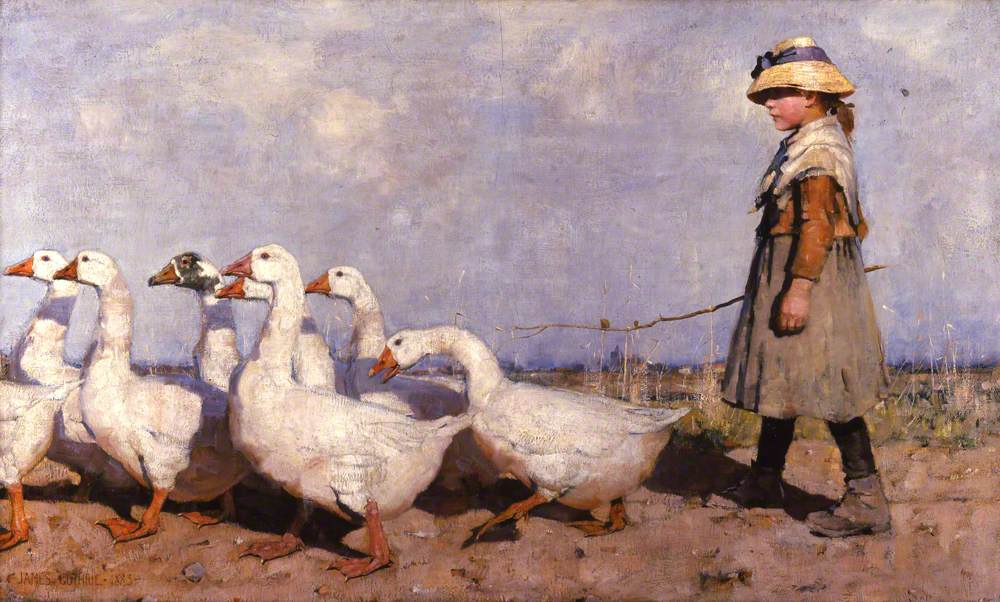Blog
Teaching Tips


Terms started for Dutch universities on the 5th of September but many British universities only go back this week. For some universities this is the Michaelmas term, coinciding with and named for the week of the 29th of September, the Feast of Saint Michael and all Angels. The original biblical association is with the archangel Michael who fought Lucifer and is therefore closely associated with Saint George as his earthly equivalent fighting the dragon. You see them here in the panels to either side, on the left Saint Michael and on the right Saint George (both by Carlo Crivelli).
This is a day with an array of different associations and an important moment in the social and economic calendar of medieval Christians;

- Asters or michaelmas daisies, one of the few flowers still around at this time of year (The Michaelmas daisies, among dead weeds, Bloom for St Michael’s valorous deeds…”);
- Stubble-geese, geese fed on the remnants of the harvest – in some places the day is known as Goose-day
 but the goose association ties in with the next association;
but the goose association ties in with the next association; - Rent day – Michaelmas marked the end of the farming year and the start of a new one. As such it was a day that tenants paid rents to their lords and the day that bailiffs made up the accounts of the manor. If one wanted leniency for meagre or belated payment (be that in kind or in cash) adding a well-fed goose to the rent was a frequent enough occurrence for the goose to become associated with the day;
- Rent day was not the only economic association, in a medieval and early modern context this was also the day new labour contracts were agreed upon with hiring fairs taking place on or around this date;
- The start of the English and American legal year on the 1st of October was therefore a result of Michaelmas and one that has persisted to the present day.
- Brambles (or blackberries, the edible variety)! Don’t eat any picked after Thursday, goes the folklore, as they may be covered in the devil’s spit (more here). Or maybe they just fail to ripen once the late summer sun has gone…
- And finally – not to get too abstract here but in Steiner thought/schooling this is a day of finding balance in the change of the seasons (note St Michael’s scales above linking him to concepts of justice and balance). After all the freedom of Summer the shift of season to Autumn allows us to turn more to the domestic/internal sphere and focus on taming our own dragons whatever they may be. In that context it is also a day to reflect on new projects to be undertaken.

Guthrie, James; To Pastures New; Aberdeen Art Gallery & Museums; http://www.artuk.org/artworks/to-pastures-new-107066 – a favourite painting of mine.. probably because a print hung in my grandmother’s house – it hangs in The Aberdeen art Gallery – which is worth a visit should you ever find yourself in the granite city.
So having gone on that tangent the point of this post was to share and collect teaching tips for the start of term! These are suggestions explicitly for teaching economic history classes but please let me know if you have others.
- This one comes from my dear colleague, Felix Meier zu Selhausen, who uses this Economic History Game to trigger students to think about their assumptions about economic development in the very long run. He runs it as a quiz and hands out prizes (dom/cathedral tower chocolates) in the first session of his courses. His PPE students were very enthusiastic about it at the start of term and students will see many aspects re-appearing during the course. It is also a way for the teacher to learn in a playful manner how much students ‘know’ about the economic past already;
- I am personally a big fan of the somewhat outdated text Hatcher and Bailey Modelling the Middle Ages to illustrate to history students how important it is to think about the models we are using to explain historical phenomena. I also ask them to watch these two videos at home about why models are useful – thinking more clearly and intelligent citizen.
- One concept I enjoy explaining to students is age heaping – the idea that you can discover things about past populations from mistakes made always sparks interest even amongst possibly number-allergic students.
- Other course manuals are a great source of inspiration. I came across this one yesterday by Anne McCants which looked interesting. EH-net of course keeps a database of these.
- I’d love to hear others input on this – are there tactics that work particularly well for you? You can get in touch on twitter or instagrame @ESH_UU (twitter) or @economicsocialhistoryuu (Instagram)

